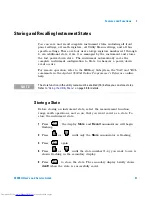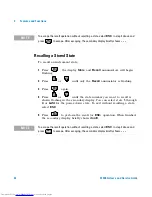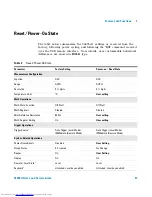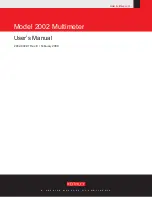
54
34405A User’s and Service Guide
3
Measurement Tutorial
An AC–coupled true RMS measurement is desirable when you are
measuring small AC signals in the presence of large DC offsets. For
example, this situation is common when measuring AC ripple present on
DC power supplies. There are situations, however, where you might want
to know the AC+DC true RMS value. You can determine this value by
combining results from DC and AC measurements, as shown below:
For the best AC noise rejection, you should perform the DC measurement
at 5½- digits.
True RMS Accuracy and High
–
Frequency Signal Content
A common misconception is that "since an AC multimeter is true RMS, its
sine wave accuracy specifications apply to all waveforms." Actually, the
shape of the input signal can dramatically affect measurement accuracy,
for any multimeter, especially when that input signal contains
high–frequency components which exceed the instrument’s bandwidth.
Error in RMS measurements arise when there is significant input signal
energy at frequencies above the multimeter’s bandwidth.
Estimating High
–
Frequency (Out
–
of
–
Band) Error
A common way to describe signal waveshapes is to refer to their “Crest
Factor”. Crest factor is the ratio of the peak value to RMS value of a
waveform. For a pulse train, for example, the crest factor is approximately
equal to the square root of the inverse of the duty cycle.
Notice that crest factor is a composite parameter, dependent upon the
pulse–width and repetition frequency; crest factor alone is not enough to
characterize the frequency content of a signal.
Traditionally, DMMs include a crest factor derating table that applies at all
frequencies. The measurement algorithm used in the 34405A multimeter is
not inherently sensitive to crest factor, so no such derating is necessary.
Downloaded from
www.Manualslib.com
manuals search engine
















































